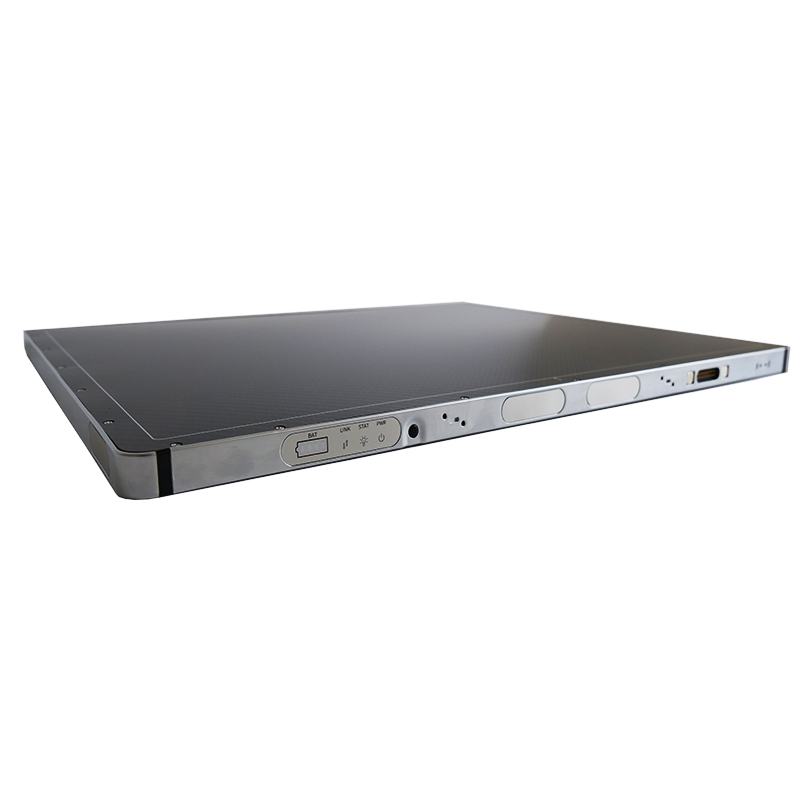Flat panel detectors (FPDs) have revolutionized the field of medical imaging, offering superior image quality and efficiency compared to traditional imaging technologies. These detectors are classified according to the materials used in their construction, with digital radiography (DR) flat panel detectors being a popular choice in modern medical facilities.
DR flat panel detectors are categorized based on the type of detector material, with the two main classifications being direct and indirect detectors. Direct DR detectors utilize a layer of photoconductive material, such as amorphous selenium, to directly convert X-ray photons into electrical charges. This direct conversion process results in high spatial resolution and excellent image quality, making direct DR detectors well-suited for capturing fine anatomical details.
On the other hand, indirect DR detectors employ a scintillator material, such as cesium iodide or gadolinium oxysulfide, to convert X-ray photons into visible light, which is then detected by an array of photodiodes. While indirect detectors may introduce some level of light scattering and blur, they offer the advantage of higher sensitivity to X-ray photons, resulting in lower radiation dose requirements for patients.
within the category of indirect DR detectors, there are variations such as amorphous silicon and amorphous selenium detectors. Amorphous silicon detectors are known for their cost-effectiveness and versatility, making them a popular choice for a wide range of imaging applications. On the other hand, amorphous selenium detectors are valued for their high detective quantum efficiency (DQE) and low noise characteristics, making them ideal for demanding imaging tasks that require exceptional image quality.
In addition to material classification, DR flat panel detectors can also be differentiated based on their size, resolution, and integration with imaging systems. Larger detectors are suitable for capturing images of the chest, abdomen, and extremities, while smaller detectors are often used for specialized imaging procedures such as dental radiography.
the classification of DR flat panel detectors according to detector materials plays a crucial role in determining their imaging capabilities and performance characteristics.
Post time: Jun-05-2024


